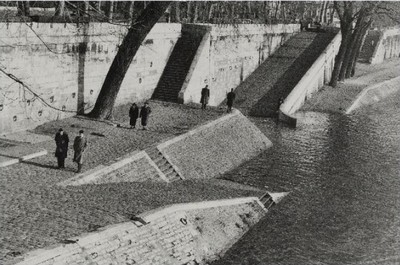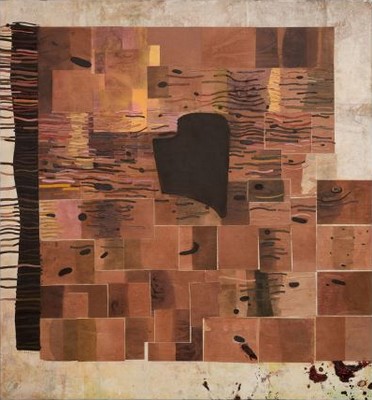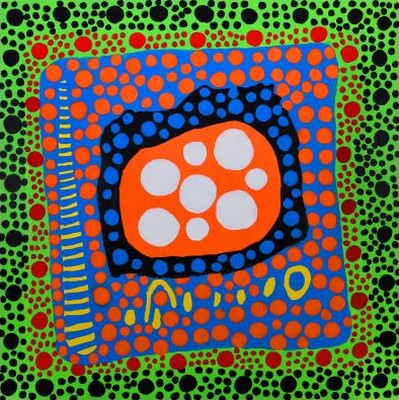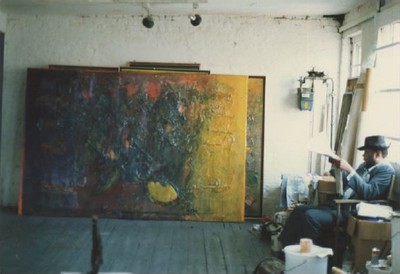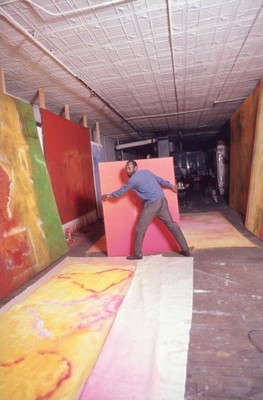David Hockney: Ma Normandie
Pace Gallery, East Hampton
May 27 – June 6, 2021
Ruby Dreaming, 2019
© 2021 David Hockney, courtesy Pace Gallery
Pace presents a solo exhibition of work by DAVID HOCKNEY as its second show of the 2021 season in East Hampton. The 14 prints on display illustrate the artist’s home in Normandy and its surroundings as well as the interior of the artist’s studio. Exploring the artist’s recurring theme of the natural narrative of the changing seasons, this body of work is full of the vibrancy that has come to define much of David Hockney’s art. These works celebrate creativity and invite viewers to see the power of nature as the world outside continues to blossom and spring gives away to the summer.
On a visit to Normandy in the fall of 2018, the artist fell in love with its pastoral landscape, and in March 2019, he moved to a rural area in the region. As he immersed himself in his new house, a 17th-century half-timber cottage on 12 acres of verdant land, David Hockney committed to documenting the arrival of spring around him—the same subject that had occupied him in 2011 when he famously depicted the advent of spring in East Yorkshire. The resulting images show the Norman countryside waking up to a new season. Images like Study of “The Entrance” (2019) not only show the rich greens and blues of spring but also the joy inherent to that season. On view more broadly are the thoughtful and exploratory ways in which David Hockney engages with his surroundings. Whether walking viewers around his house, which he has captured from each cardinal direction, or imagining the inner workings of his dog’s mind, as in Ruby Dreaming (2019), each work is imbued with the pleasure of its own creation and celebrates with delicate, assured marks the beauty of everyday life.
Included in the show are three new iPad drawings printed on paper. These works capture the inside of David Hockney’s home; one, depicting a hearth with a crackling fire, was featured on the cover of the New Yorker in December 2020 accompanied by an interview with the artist. Hockney has been drawing regularly using the iPad since the device was introduced in 2010, having previously used the iPhone in a similar manner. Throughout his career, he has experimented with a wide variety of then-new technologies, including Polaroid cameras, fax machines, and video.
Concurrent with this exhibition, the artist’s new 2½ minute animated work, titled Remember you cannot look at the sun or death for very long, was broadcast on electronic billboards in Times Square in New York and prominent locations in London, Los Angeles, Tokyo, and Seoul during the month of May. In New York, Times Square Arts feature the work as part of its Midnight Moment series, playing it on 76 synchronized screens throughout Times Square nightly from 11:57pm to midnight. The work depicts a sunrise, offering a powerful symbol of hope and collaboration, in keeping with themes explored in the artist’s exhibition at Pace in East Hampton.
Several museum exhibitions of the artist’s work in the United States and United Kingdom also coincide with the East Hampton presentation. At New York City’s Morgan Library, a show of Hockney’s portraits on paper, which opened in October, will run through May 30, 2021. An astute pairing of the joyful landscapes of Hockney and Vincent van Gogh is on view at the Museum of Fine Arts Houston through June 20, 2021. Finally, an exhibition of 116 of Hockney’s iPad drawings of spring in Normandy opened at the Royal Academy in London on May 23, 2021.
DAVID HOCKNEY (b. 1937, Bradford, United Kingdom), one of the most influential artists of the late 20th and 21st century, has consistently explored the potential of perspective and pictorial space in his work. As a student, David Hockney studied traditions of British landscape painting. He broke from the then-reigning interest in abstract painting to pursue his own style, developing a brightly colored palette that burst forth in his paintings from the 1960s and 1970s in Los Angeles and continued into a distinctive, studied, and original approach to the problems and conventions of painting. Hockney works in a variety of media, including printmaking, painting, stage design, and photographic collage.
PACE GALLERY
68 Park Place, East Hampton, NY 11937



